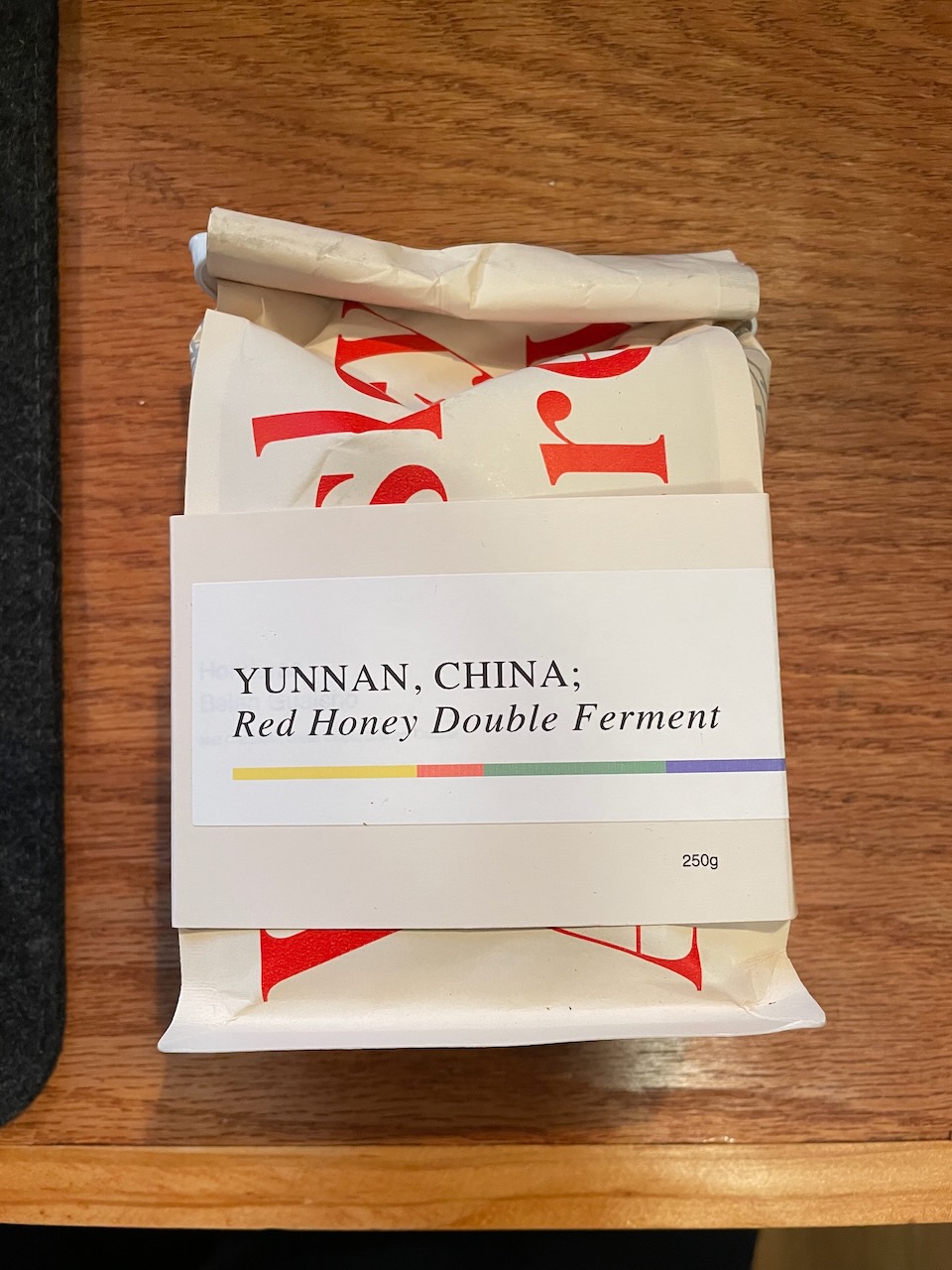
Yunnan Red Honey Process
Chris Herdt spontaneously sent me these beans, which wereroasted in Minneapolis, where he lives, because he loves this roast and thought I would enjoy it, coffee fiend that I am.
By some chance eddy in the tides of coffee tastes and production, I had not one but two bags of some of the Yunnan beans from our local roaster in Portland when it arrived. I believe they’ve made two or three roasts with Chinese beans. Martha and I first encountered Chinese coffee while we were in Japan, and it was quite good, but these are excellent.
This is the fourth or fifth bean from China I’ve tasted, I don’t think I can describe the dimensions of what I’m starting to see as a shared character of Chinese beans, or at least those from the regions I’ve tried. Thinking about it, I’m inspired to dig out the sketch of “tea space” that I made years ago when I tried keeping a tea journal. It was one of the more ambitious attempts to translate, in detail, a synesthetic experience, in this case that of drinking good tea. And, as it happens, a lot of the tea I was drinking at the time was from China. “Tea space” was like this lenticular space with multiple dimensions for the colors, spacial qualities, actual flavors, and associated tonalities that were part of the experience of drinking tea for me.
This is a honey process, and I had a hunch about it that I told Chris. There’s something, like, elastic and smooth about the flavor of Yunnan beans, like a shade of red used for a lolipop or a sports car from the 90s. If I had a “coffee space” diagram, these bouyant-but-deep Urs would be located close to the deep, dank well of chtonic flavors that come out of the more ambitious and strange beans I’ve had, mostly thanks to Push x Pull and Brandywine. Some of those are honey processed, others are co-ferments, and the standout, or at least the original that caught my attention was the Corazon de Jesus, which had been described to me by one of the baristas as resembling the flavor of a pineapple that had been left out for just a day or two too long, and he was right. My first shot of that was one of the most radical coffee experiences I’ve had.
I told Chris I suspected that these beans would land somewhere between those and the other Chinese roasts I’ve had, but I don’t think the “pineapple” descriptor translated well. This is where a Coffee Space diagram would help, because I’m sure he was thinking about the “pineapple flavor” part of “pineapple”, which is bright, yellow, tangy, and sharp, but the qualities we’re talking about here are rich, warm, and funky, but only through a sort of sublimation through the fruity top notes.
Anyway, I was mostly right. I’m drinking it now. It’s fantastic, and has that bouyant fermenty sense of a funky honey process, but some lighter, herbal midrange, and I absolutely understand the impulse to grab one of the last bags available and send it to a friend who is into coffee enough to, well, write this. Thanks Chris, this was a hit. Maybe I’ll send you some beans in return.